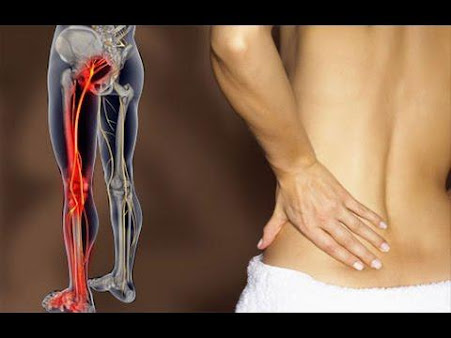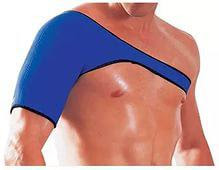An inversion table is a device designed to help relieve back pain by using gravity traction to decompress the spine. It tilts your body upside down or at an angle, allowing your spine to stretch and relieve pressure on compressed discs and nerves. But is it the right solution for you? Let’s explore its benefits, risks, and whether it can help with your specific condition.
Common Causes of Back Pain & Spinal Issues
Back pain can result from various conditions that put stress on the spine, including:
✅ Herniated or Bulging Discs – Discs in the spine slip out of place, pressing on nerves.
✅ Degenerative Disc Disease – Age-related wear and tear causes disc shrinkage and pain.
✅ Sciatica – Compression of the sciatic nerve leads to pain radiating down the legs.
✅ Spinal Stenosis – Narrowing of the spinal canal, putting pressure on nerves.
✅ Muscle Strain & Poor Posture – Weak or overused muscles lead to chronic pain.
✅ Scoliosis & Other Spinal Conditions – Abnormal spine curvature affects alignment.
If you experience the following, an inversion table may provide relief:
🔹 Lower Back Pain – Especially from disc compression or poor posture.
🔹 Nerve Pain (Sciatica) – If caused by disc pressure on the sciatic nerve.
🔹 Stiffness & Reduced Flexibility – Helps stretch tight muscles and improve mobility.
🔹 Compressed Spinal Discs – Creates space between vertebrae, relieving pressure.
🔹 Chronic Pain from Poor Posture – Corrects spinal misalignment over time.
However, not everyone is a good candidate for inversion therapy. Let’s dive into the diagnosis and treatment options.
Diagnosis of Back Pain & Spinal Conditions
If you have persistent back pain, it’s essential to get a proper diagnosis before trying an inversion table. Common diagnostic methods include:
🩺 Physical Examination – Checking posture, flexibility, and pain response.
📸 Imaging Tests – X-rays, MRIs, or CT scans to assess spinal structure.
⚡ Nerve Tests (EMG & Nerve Conduction Studies) – Evaluates nerve function and compression.
🔬 Blood Tests – To rule out infections or inflammatory conditions like arthritis.
Once diagnosed, your doctor may recommend various treatment options, including physical therapy, medication, or alternative treatments like inversion therapy.
An inversion table is designed to tilt your body at different angles to:
✔️ Relieve Spinal Pressure – Gravity stretches the spine, reducing compression.
✔️ Improve Circulation – Enhances blood flow to discs and muscles.
✔️ Reduce Nerve Compression – Helps relieve sciatica and pinched nerves.
✔️ Promote Flexibility – Improves range of motion and posture.
✔️ Relax Muscles – Alleviates tension and stiffness.
Usage Guidelines:
🔹 Start at a gentle angle (15-30 degrees) for 1-2 minutes.
🔹 Gradually increase the angle and duration as tolerated.
🔹 Limit sessions to 5-10 minutes to avoid dizziness or discomfort.
🔹 Always return to an upright position slowly to prevent blood pressure changes.
Who Should NOT Use an Inversion Table? (Risk Factors & Contraindications)
While inversion therapy can be helpful, it’s not suitable for everyone. You should avoid using an inversion table if you have:
🚫 High Blood Pressure or Heart Disease – Can cause blood pressure spikes.
🚫 Glaucoma or Eye Problems – Increases pressure in the eyes.
🚫 Osteoporosis or Weak Bones – May increase fracture risk.
🚫 Hernias (Abdominal or Hiatal) – Could worsen symptoms.
🚫 Pregnancy – Inversion may not be safe for expectant mothers.
Always consult a doctor or physical therapist before trying inversion therapy, especially if you have any existing medical conditions.
Alternative Treatments for Back Pain
If inversion therapy isn’t suitable for you, consider these alternative treatments:
🔹 1. Physical Therapy & Exercise
🏋️ Core Strengthening – Strengthens muscles supporting the spine.
🧘 Stretching & Yoga – Improves flexibility and posture.
🏊 Low-Impact Cardio (Swimming, Walking) – Enhances blood flow to the spine.
🔹 2. Medications & Pain Management
💊 NSAIDs (Ibuprofen, Naproxen) – Reduce inflammation and pain.
💊 Muscle Relaxants – Help relieve muscle spasms.
💊 Topical Analgesics (Lidocaine, Capsaicin Creams) – Target localized pain.
🔹 3. Alternative & Holistic Therapies
🌿 Chiropractic Adjustments – Realign the spine to relieve pressure.
💆 Massage Therapy – Loosens tight muscles and improves circulation.
🌿 Acupuncture – May help reduce nerve-related pain.
🔹 4. Lifestyle Changes & Ergonomics
🪑 Use an Ergonomic Chair – Supports proper posture.
🛌 Sleep on a Supportive Mattress – Keeps the spine aligned.
🚶 Take Frequent Breaks – Avoid prolonged sitting or standing.
✅ Try it if: You have disc compression, sciatica, or chronic back pain and your doctor approves.
❌ Avoid it if: You have heart issues, high blood pressure, osteoporosis, or eye conditions.
Inversion therapy can be a helpful tool when used correctly, but it’s not a cure-all. Combining it with exercise, physical therapy, and lifestyle changes will provide the best long-term relief.
💡 home back pain exercises? Let’s discuss! 😊
Safe At-Home Back Pain Exercises 🏡💪
If you're dealing with back pain, gentle stretches and strengthening exercises can help relieve tension, improve flexibility, and support your spine. These exercises are safe, easy to do at home, and require little to no equipment.
1️⃣ Cat-Cow Stretch (Spinal Mobility) 🐱🐄
✔️ Improves flexibility and relieves tension in the spine.
🔹 How to Do It:
- Start on all fours with your hands under your shoulders and knees under your hips.
- Inhale, arch your back, lift your head, and push your belly down (Cow Pose).
- Exhale, round your back, tuck your chin, and pull your belly in (Cat Pose).
- Repeat 8-10 times in a slow, controlled motion.
2️⃣ Child’s Pose (Lower Back Stretch) 🧘
✔️ Gently stretches the lower back, hips, and thighs.
🔹 How to Do It:
- Kneel on the floor and sit back on your heels.
- Stretch your arms forward and lower your chest toward the ground.
- Hold for 20-30 seconds, breathing deeply.
- Repeat 2-3 times.
3️⃣ Pelvic Tilts (Core & Lower Back Strength) 🔄
✔️ Strengthens core muscles and stabilizes the lower back.
🔹 How to Do It:
- Lie on your back with knees bent and feet flat on the floor.
- Tighten your abdominal muscles and press your lower back into the floor.
- Hold for 5 seconds, then release.
- Repeat 10-15 times.
4️⃣ Knee-to-Chest Stretch (Lower Back Relief) 🤗
✔️ Eases tension in the lower back and improves flexibility.
🔹 How to Do It:
- Lie on your back with knees bent.
- Bring one knee toward your chest and hold it with both hands.
- Hold for 20-30 seconds, then switch legs.
- Repeat 2-3 times per leg.
5️⃣ Bridge Exercise (Core & Glutes Strengthening) 🌉
✔️ Strengthens the lower back, glutes, and core muscles.
🔹 How to Do It:
- Lie on your back with knees bent and feet hip-width apart.
- Tighten your core and slowly lift your hips, creating a straight line from shoulders to knees.
- Hold for 5-10 seconds, then slowly lower down.
- Repeat 10-15 times.
6️⃣ Seated Spinal Twist (Upper & Lower Back Stretch) 🌀
✔️ Improves spinal mobility and relieves tension.
🔹 How to Do It:
- Sit cross-legged or with legs extended.
- Place your right hand on your left knee and twist your torso to the left.
- Hold for 20 seconds, then switch sides.
- Repeat 2-3 times per side.
Bonus Tips for a Healthy Back 🎯
✅ Maintain Good Posture – Sit and stand tall with shoulders relaxed.
✅ Stay Active – Avoid prolonged sitting or standing.
✅ Use an Ergonomic Chair – Supports your lower back.
✅ Sleep on a Supportive Mattress – Keeps the spine aligned.
✅ Apply Heat or Ice – Helps with pain relief and inflammation.





































